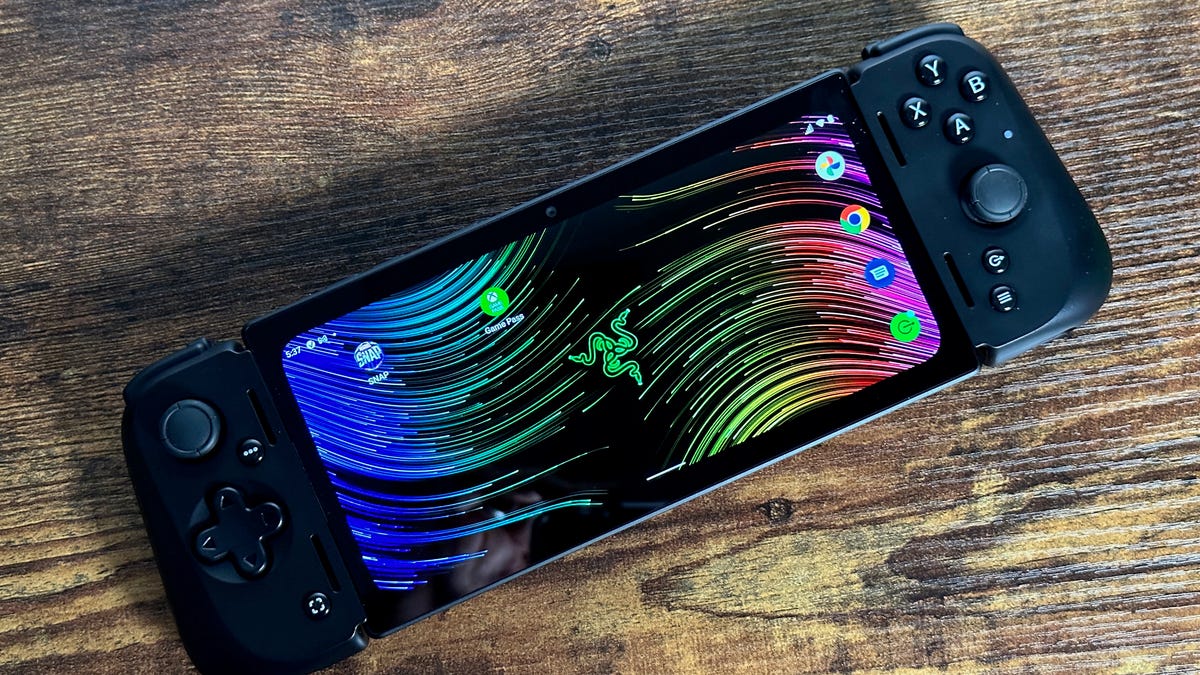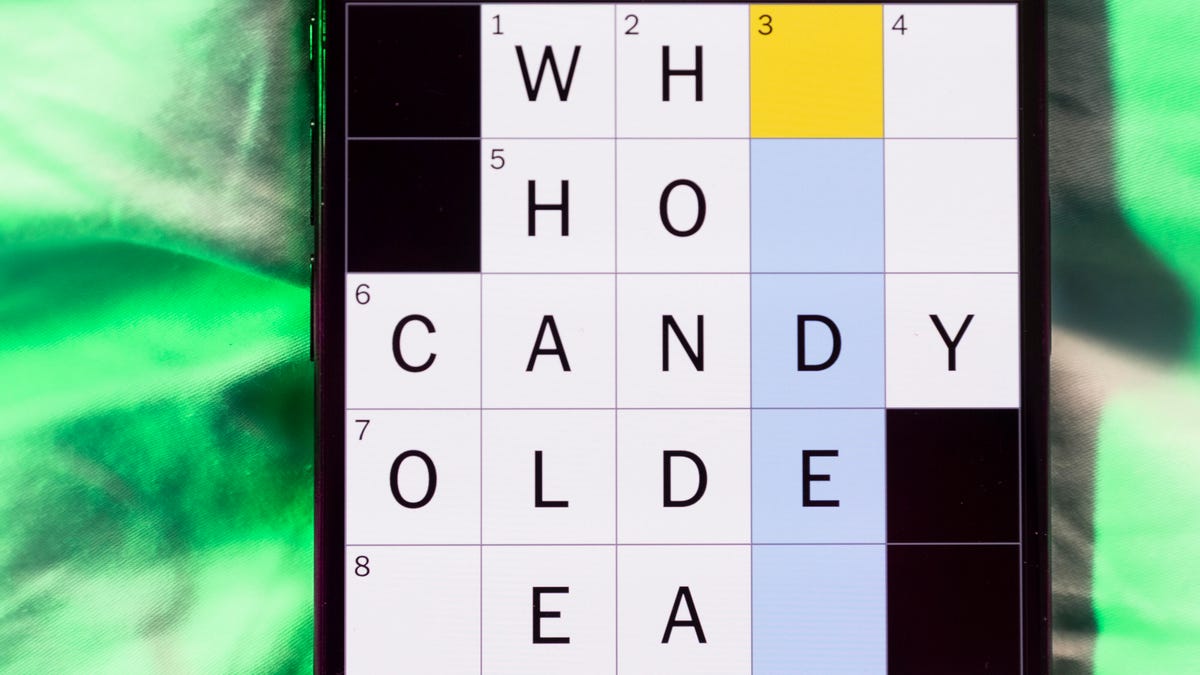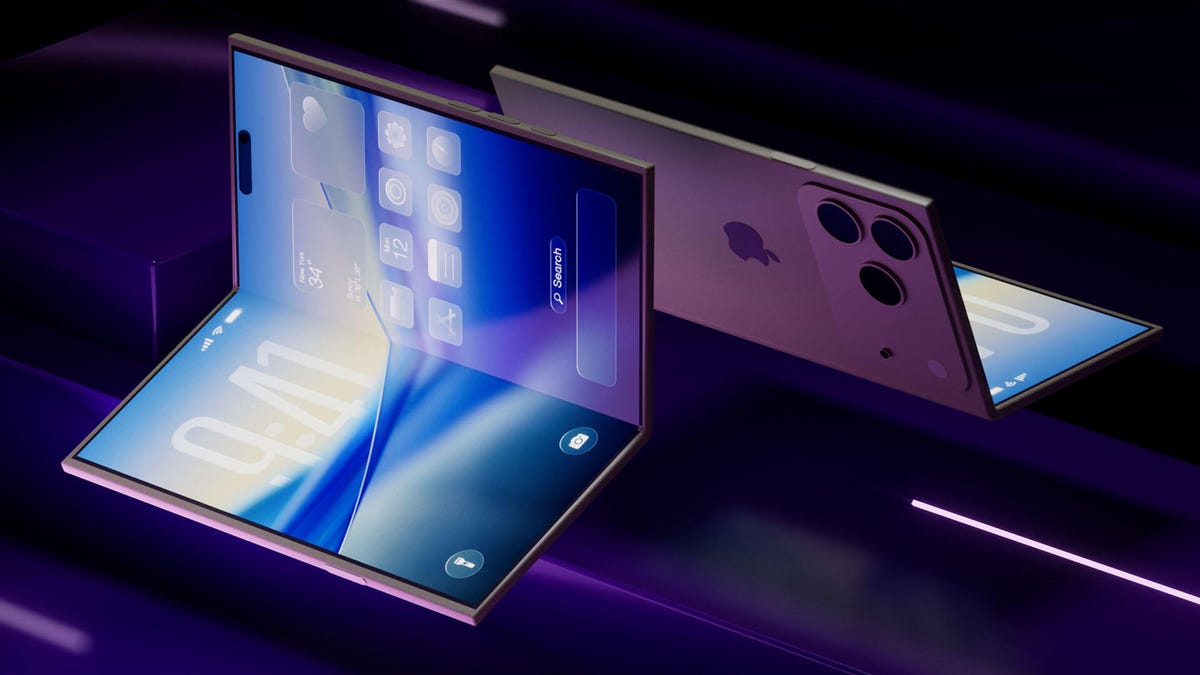Technologies
Razer Edge Review in Progress: Caught Between Switch and Steam Deck
Razer’s new gaming handheld isn’t enough of any single thing so far. Could it be enough for you?

The Razer Edge isn’t Razer’s first gaming handheld. That honor goes to the original Razer Edge, a large experimental gaming PC tablet that I reviewed a decade ago. Handheld gaming hardware has come a long way since then, and so has Razer, a company known for stellar laptops and gaming peripherals. I wish I could say the Razer Edge was as good as most serious gamers might hope it would be, but this first effort seems meager after being spoiled by Switch and Steam Deck.
I watched my 14-year-old son play Elden Ring on the Razer Edge one morning, and I asked him how it felt. He’s already beaten Elden Ring and keeps playing it on the Xbox Series X. He told me he wouldn’t go back to the Razer Edge to play for several reasons. First, the controller quality. He felt it was a big step back from playing on an Xbox controller, and he isn’t wrong.
The Razer Edge is an Android handheld, a 6.8-inch phone-type mini tablet that comes with a clip-on USB-C controller. Razer already has Kishi game controllers for phones, which are similar to the Backbone One and can turn phones into little gaming handhelds for around $100. The Edge is basically that same type of controller, bundled with its own mini tablet. At $400 for the Wi-Fi version, the price isn’t awful. You could think of this as paying $300 more for a 6.8-inch AMOLED-dedicated mini tablet, which is equipped with a brand-new Qualcomm Snapdragon G3X gaming-focused chipset.
I’m reviewing a Verizon version with 5G that costs more. It’s $600, or $360 if you sign up for a $10/month 5G wireless plan. I briefly tried the Razer Edge in Las Vegas earlier this year, but here are my thoughts after playing at home for longer.
It’s not a Steam Deck
If you think you’re getting a Steam Deck-alike here, well… you’re not. The Edge is pure Android and runs apps off the Google Play store. You’ll have a standard selection of Android games that you’d also get on your phone, many of which work with the Edge controller scheme. You could use the Edge mini tablet to access other Android apps, like Gmail, Marvel Snap or Chrome.
You can run streaming games on the Edge, similar to your phone or tablet. I locally streamed Xbox games and played Xbox Game Pass games streaming from the cloud. There’s Steam Link local-game streaming (if you have a gaming PC) and Nvidia GeForce Now cloud-streaming game support, too. Verizon anticipates you’ll use the Edge to stream games on the go, via 5G.
While the Edge can decently run the streaming games I’ve played on the Xbox so far, it doesn’t feel as impressive as I’d hoped for. The controller seems a step below normal game console controls. The triggers and buttons are fine, but shallower and more hollow-feeling. Also, although Razer supports haptics on these controllers, I have yet to play a game that can use them (and haptics are a big deal for me).
The Edge’s display, while beautifully vivid, is long like a phone. PC and console games end up pillar-boxed, shrinking the playable space and leaving extra-large bezels on the sides. It turns what seems like a big screen into one not quite so big — and for console games designed for big screens, it makes text and menus super small and hard to read.
It’s not a Switch
The Edge also lacks a few things that I’ve taken for granted on the 6-year-old Nintendo Switch. The Switch can easily dock with a TV to become a regular sofa console, or it can be a handheld. It also has detachable wireless controllers and a kickstand. The Edge, meanwhile, is designed to be purely a handheld. And its controller, which stretches and plugs into the tablet, doesn’t work wirelessly. There’s no kickstand, either.
I would love a more modular design — for instance, if I wanted to prop it up on a table with a kickstand or dock. The handheld design is OK, and after all, the Steam Deck does the same (though the Steam Deck has an optional dock like the Switch). But the Steam Deck’s controls feel more refined. The Edge has the limits of a handheld-only design with few perks.
It’s not a phone
Also, it’s good to remember that the Edge isn’t a phone, even if it resembles one. The 5G model can connect to cellular, and you could certainly try video chat or other calls with it. However, the Edge only has one camera (front-facing), and it lacks a fingerprint sensor.
It also has some pretty noisy fans in the back that purr while the system is on, meaning it definitely isn’t water-resistant. The fans kick in quite a bit, even when the system seems to be in sleep mode. I’ve found battery life on standby can disappear fast, but then again, this is with 5G on.
Still, you could easily use the Edge as a small handheld tablet for reading, videos, mail, social media and whatever else. It’s a fully equipped smart device, although the 128GB onboard storage means you’ll probably want to add a microSD card. I haven’t felt the need to do so yet, mostly because all the games I’ve wanted to play are streaming.
A good idea, but an imperfect landing
I’m only harping on the downsides because Razer has excellent game controller products, and the company can clearly make fantastic hardware. I’d love to see more thought put into how a handheld could be not only serviceable, but designed perfectly, with more modularity and a display with a better aspect ratio.
There’s also a weird element with the target audience and software library. The Switch leans on Nintendo’s eShop, and the Steam Deck has Steam. The Razer Edge has a split focus on Android games, Steam Link, Xbox Game Pass and other streaming options like Nvidia GeForce Now. Much like the Logitech G Cloud, another Android device aimed at streamers, it feels a little redundant or superfluous.
While the Edge is functional enough, if you own a newer smartphone, you could simply buy a controller accessory instead. The Razer Edge doesn’t excel in any one area for me, and that’s why I’d like to see the overall idea pushed further. Whether Razer and Qualcomm will choose to do that remains to be seen.
Technologies
Today’s NYT Mini Crossword Answers for Wednesday, Nov. 26
Here are the answers for The New York Times Mini Crossword for Nov. 26.

Looking for the most recent Mini Crossword answer? Click here for today’s Mini Crossword hints, as well as our daily answers and hints for The New York Times Wordle, Strands, Connections and Connections: Sports Edition puzzles.
Need some help with today’s Mini Crossword? It’s a tough one for a change! Think transit — maybe the kinds some people might take to get home for Thanksgiving. Read on for the answers. And if you could use some hints and guidance for daily solving, check out our Mini Crossword tips.
If you’re looking for today’s Wordle, Connections, Connections: Sports Edition and Strands answers, you can visit CNET’s NYT puzzle hints page.
Read more: Tips and Tricks for Solving The New York Times Mini Crossword
Let’s get to those Mini Crossword clues and answers.
Mini across clues and answers
1A clue: Greyhound, e.g.
Answer: BUS
4A clue: Passenger’s walkway on a 1- or 6-Across
Answer: AISLE
6A clue: The Wolverine to Chicago’s Union Station, e.g.
Answer: TRAIN
7A clue: Barely beat, with «out»
Answer: EDGED
8A clue: «___ out!» (ump’s cry)
Answer: YER
Mini down clues and answers
1D clue: Feathered creature, in kid-speak
Answer: BIRDY
2D clue: Electricity bill calculation
Answer: USAGE
3D clue: More like a fox
Answer: SLIER
4D clue: Past-tense verb that sounds like a number
Answer: ATE
5D clue: Redundant word before «result»
Answer: END
Technologies
iPhone Fold Will Be Creaseless and Cost $2,400, Report Says
Apple’s first foldable could be an expensive one.

The first foldable iPhone could be less than a year away, and reportedly, you won’t ever see a crease. You could, however, see a decent dent in your wallet.
According to a report by Chinese publication UDN, engineers have made «breakthroughs» in creating a «crease-free design» for the iPhone Fold, and the product cycle has now moved past the experimental stage to pre-mass production mode. The Fold reportedly could be launched in September 2026.
Apple did not immediately respond to a request for comment.
Don’t miss any of our unbiased tech content and lab-based reviews. Add CNET as a preferred Google source.
But you’ll pay dearly for the iPhone‘s creaseless screen. Another report by Fubon Research says the iPhone Fold could cost as much as $2,399, which would make it the most expensive foldable phone on the market — higher than the Google Pixel 10 Pro Fold, the Samsung Galaxy Flip 7, Samsung Galaxy Z Fold 7, Motorola Razr Ultra and Motorola Razr, all which range between $700 and $2,000.
More from CNET: A Word of Warning to Apple About the Fold
The reported $2,400 price tag might pack a wallop, but so could the Fold’s possibly game-changing design quality. The market has steadily grown since the first foldable phone was launched in 2018, but no one has yet been able to make one that doesn’t show a crease after several folds. The OnePlus Open has the least visible crease of all the foldables — there’s even a subreddit extolling the virtues of its near-creaseless-ness. But a crease is still a crease.
‘No crease is a hard feat!’
Jessica Naziri, a content creator focused on tech made for women at TechSesh.co, says, «2026 is the year of foldables.»
«We’ve been begging our phones to behave like laptops, and this gets us a lot closer to that reality,» Naziri told CNET. «If Apple is doing it, you know it will be good. Between the iPhone Air and the upcoming foldable, it’s nice to finally see Apple trying new form factors.
Despite the high price, Naziri says consumers will still pony up.
«Obviously, the engineering feat is expected to come with a premium price tag, and people will find a way to save up and pay up,» she said.
Creaseless comes at a cost
The UDN report said that teams from Apple, NewRixing and Amphenol have been collaborating on key component bearings to avoid the iPhone Fold showing creases. Those teams have used high-strength hinge component technology made of liquid metal to improve folding durability, according to the report.
The inner screen is developed by Samsung Display, and the panel structure, material handling and lamination are designed by Apple, the report said. UDN also said that Taiwan-based Hon Hai Technology Group has created a production line where several dozen iPhone Fold devices will be initially manufactured for testing before mass production begins.
The advanced components and design work led to the hefty consumer cost, however. Fubon Research analyst Arthur Liao said the OLED panel, hinge and lightweight internals will help drive up the price of the iPhone Fold. He also said that RAM prices have risen 75% in the past year, and total material cost could go up between 5% and 7% in 2026 because of increased demand for chips, memory and storage.
Technologies
Fubo Loses NBCUniversal Channels, Putting Your NBA Games in Jeopardy
Sound the carriage dispute Klaxon: Some network programming has disappeared from the streaming service after content negotiations fell through.

If you’ve noticed your favorite show has recently gone missing from Fubo, it’s probably because an entire block of programming just disappeared from the site’s channel lineup.
The live TV streaming service is engaged in a carriage dispute with NBCUniversal, a media company whose subsidiaries include NBC News, Universal Studios, Peacock, Telemundo and Illumination, among other brands.
On Nov. 21, NBCUniversal pulled all of its networks from Fubo. This is an especially big deal for sports watchers on the streaming service, since the Fubo Sports subscription — which began earlier this year — depends on the licensing agreement with NBCUniversal. However, viewers can still access sports content on networks like ESPN, CBS and ABC.
Fubo released a statement on Tuesday, alleging the media giant is engaging in «discriminatory tactics» that are harming the streamer’s subscribers.
«NBCU is discriminating against Fubo and our subscribers,» the statement says. «They allowed YouTube TV and Amazon Prime to integrate Peacock directly into their channel store, but refused to give Fubo the same rights.»
Don’t miss any of our unbiased tech content and lab-based reviews. Add CNET as a preferred Google source.
Fubo says NBCUniversal is trying to force a multiyear deal for certain channel packages under the media giant’s new spin-off media company, Versant, and that it’s trying to upcharge on the Fubo Sports subscription by adding «expensive, non-sports channels» into the agreement, increasing the cost.
According to NBCUniversal’s website, the Versant brands include CNBC, E!, MS Now, SyFy and USA, among other channels.
NBCUniversal did not respond to a request for comment.
Fubo says that it’s willing to move forward without NBCUniversal content if an agreement cannot be reached.
«Fubo is committed to bringing its subscribers a premium, competitively-priced live TV streaming experience with the content they love,» its statement concludes. «That includes multiple content options, including a sports-focused service, that can be accessed directly from the Fubo app.»
Fubo recently became an affiliate of The Walt Disney Company, following its merger with Hulu’s live TV platform in October. It’s unclear whether this merger affected content agreement negotiations with NBCUniversal. Fubo did not respond to a request for comment on this.
-

 Technologies3 года ago
Technologies3 года agoTech Companies Need to Be Held Accountable for Security, Experts Say
-

 Technologies3 года ago
Technologies3 года agoBest Handheld Game Console in 2023
-

 Technologies3 года ago
Technologies3 года agoTighten Up Your VR Game With the Best Head Straps for Quest 2
-

 Technologies4 года ago
Technologies4 года agoBlack Friday 2021: The best deals on TVs, headphones, kitchenware, and more
-

 Technologies4 года ago
Technologies4 года agoVerum, Wickr and Threema: next generation secured messengers
-

 Technologies4 года ago
Technologies4 года agoGoogle to require vaccinations as Silicon Valley rethinks return-to-office policies
-

 Technologies4 года ago
Technologies4 года agoOlivia Harlan Dekker for Verum Messenger
-

 Technologies4 года ago
Technologies4 года agoiPhone 13 event: How to watch Apple’s big announcement tomorrow
